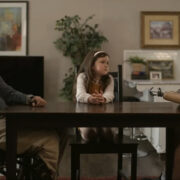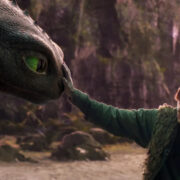PARIAH: Identity & Awareness As A Family Matter
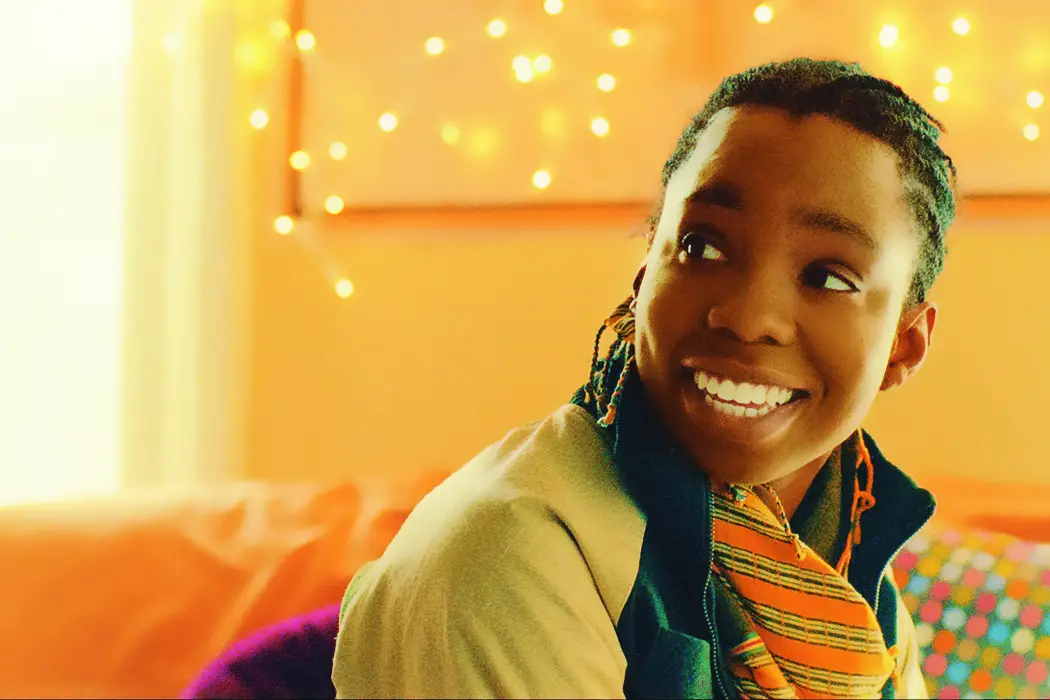
Sasha has written for Roger Ebert's website, The Worcester Journal,…
I’d first heard of Dee Rees’ Pariah in 2011 when it premiered at Sundance, but I didn’t get around to seeing it (or even finding out what it really was) until last week. The only initial impression I got was from the poster photo of a teenage African American girl looking at her reflection in a bus window, so I assumed some introspective themes about identity were a given—but aside from that, almost everything about this movie surprised me. I’m embarrassed it took so long for me to watch it.
More than ‘the female Moonlight‘
Pariah features the spellbinding Adepero Udoye in her breakout role as Alike (pronounced ah-LEE-kay, though she’s also called just Lee), a 17-year-old girl who starts to explore her identity as a lesbian. Her more experienced and outgoing friend Laura (Pernell Walker) takes her to gay clubs and introduces her to the lesbian social scene where Alike experiments with her aesthetic, usually settling for hair pulled under a hat and baggy clothes.
Meanwhile, scenes from Alike’s high school and the lives of her mother, Audrey (Kim Wayans) and father, Arthur (Charles Parnell) reveal the unique struggles of being an LGBTQ teenager in the African American community, as Alike tries to figure things out and deal with the social pressure put on and reinforced by her parents.
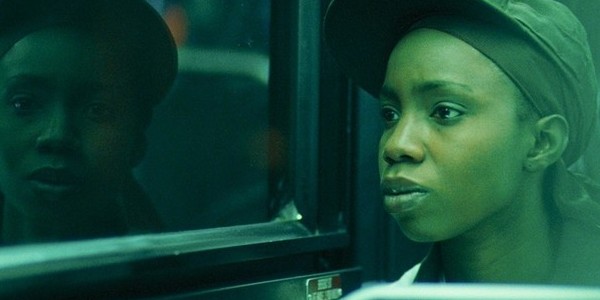
In preliminary research for this review, I found a lot of comments online comparing Pariah to Barry Jenkins’ recent Best Picture winner, Moonlight, with a common thesis along the lines of: “Pariah is the female Moonlight.” There is undoubtedly a solid foundation for such a comparison – the cosmic, underwater colors and dreamy cinematography from Bradford Young were especially reminiscent of James Laxton’s work with Jenkins.
Yet, one of the most surprising things about this movie, in hindsight, is that it came out six years ago and received a fraction of the attention and acclaim that Moonlight did. It’s hard to imagine that Jenkins wasn’t influenced by Rees’ groundbreaking piece, continued from her college thesis project, when he developed his own semi-autobiographical coming-of-age and coming out story. If anything, Moonlight is the male Pariah.
An artfully composed human drama
With that out of the way, there is so much good to talk about. I’m looking through my notes and I literally don’t know where to begin. The lighting, yes, the colors, absolutely, the soundtrack – almost entirely African American female rock and roll – all the technical excellence of Pariah deserves individual attention.
On Wikipedia, it’s classified as “art drama”, which can often translate to unwitting audiences as “experimental” “uncomfortable” “hard to get into” or “bad”, but I’m happy to report that it really is what it purports to be – an artful expression of a human drama, from a demographic whose artful expressions are too often unheard of, and whose human dramas are too often marginalized.
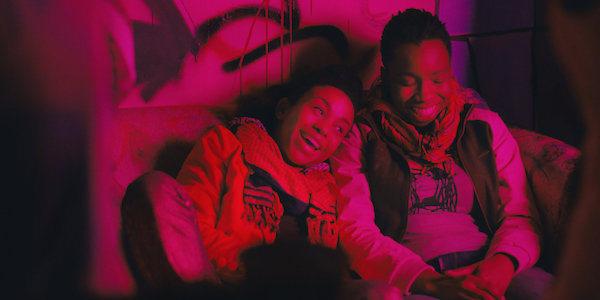
Rees’ shots are beautifully composed; one of the most striking comes when we watch Alike change in the bathroom at school from her girly mom-bought outfit to her preferred looser style. From our vantage point, peering in through the crack of the stall door, Alike is compressed, restricted to the tight and narrow confines of our limited perspective. The cinematography is wonderfully, alternating warm and alienating when it needs to be. The natural light dictating time of day is just as electrifyingly beautiful as the neon party lights and soft bedroom lamp beams.
Each musical selection feels on point and almost always unexpected (which are always the best kind of song choices). Among the most memorable musical moments was in Alike’s moment of crisis, twenty minutes from the movie’s end, the morning after a blissful night: “Yet it all seems so strange in the daylight,” one of many women on Rees’ soundtrack rages, along with discordant electric guitar, quick cuts and shaky handheld shots.
Part of a Pariah family
Technically, Pariah passes with flying colors, and when it comes to the strength of Rees’ writing and character development, the grade is the same. In interviews, Rees admits that when it came to the shooting process, the written script was less important than the relationships between characters being clear and believable. She describes unorthodox rehearsal strategies, like arranging dinners and social games for the actors to participate in while in character, having everyone imagine and live the history of their role before they were in front of any cameras.
This approach paid off phenomenally, especially with Audrey. Audrey is probably the primary antagonist in this story, to simplify it in most basic storytelling roles, but she is an entirely full, complicated, sympathetic character, just like Alike. Again, this trend I love proving right, when women directors actually don’t try to manipulate your position for or against their characters.
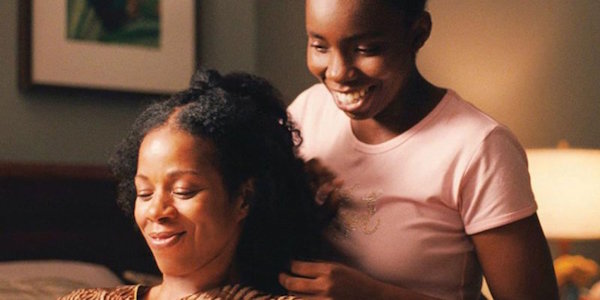
Binaries are big in this world – you either are something or you aren’t, you’re with someone or you’re not, you love someone or you don’t. But I really can’t stress enough how great it is that Rees allows audiences time alone with so many of these characters, not just the protagonist. It’s almost less the story of an individual than it is of a community, and a family.
Audrey, Arthur, Laura, Bina (Aasha Davis), Alike’s first real romantic interest, and even Alike’s little sister, Sharonda (Sahra Mellesse) get dimension. Laura studies for her GED while living with her sister in the aftermath of a falling out with their mother; Bina is overtly feminine and flirty with Alike and a bit more shy when we catch a glimpse of her hanging out with a guy, perhaps conflicted over whether she is “gay gay” despite her verbal denial of that identity; Sharonda is what little sisters are – close annoyances who know us well and don’t often discuss.
Most notable about Sharonda’s character was how comfortably she engaged her family in joking (though it probably wasn’t a joke to her) about having sex on prom night. The dinner conversation makes it clear, this isn’t a family that doesn’t talk about personal details with each other – this is a family that doesn’t talk about this particular personal detail. Everyone seems to know that Alike is gay even though it is not explicitly announced in the film until the very end, and the weight of this understood silence adds particular tension to each relationship, particularly between the parents.
An anti-antagonist approach
In fact, in my second time watching the film, I was almost more invested in figuring out what had gone down between Audrey and Arthur to bring their marriage to its current state. Audrey is desperate for Arthur’s attention, demanding her daughters sit up straight on his night off, doting on him generally and pretending to be asleep on the couch in an effort to get some time alone with him when he finally comes home at three in the morning. Arthur, a police officer, is in denial of his daughter’s blooming sexual preferences but clearly close with her, defending her when other men suggest she’s a lesbian and thus coming across like a good guy to us at times.
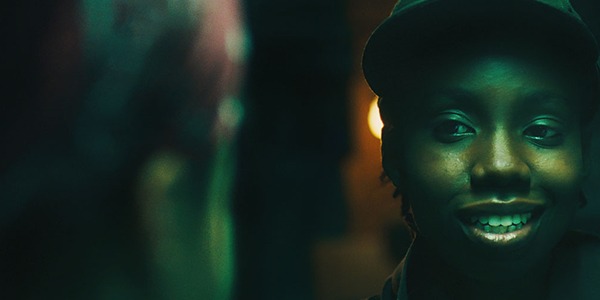
To Audrey, though, Arthur is the root of the family’s complicated dynamics – her desperation for his love and attention is intensified by Alike’s “tomboy thing,” as she thinks of it, which reveals itself in increasingly unfeminine preferences in clothing and company. The less femme Alike presents herself, the more terrified Audrey becomes of losing Arthur, for lack of a picture-perfect family to come home to at the end of the day.
When Alike announces she isn’t going to prom, Audrey is outraged, hiding her need for perfect prom photos, showing her daughter looking like a classic dolled-up gal, with concern that Alike “won’t have any memories.” Images and appearances are always crucial in any story of identity, but this movie does a great job expanding the impact of those often cruel exterior motives over most of the characters involved, rather than just the heroine.
Conclusion
Pariah will probably be remembered, first and foremost, as essential material in the African American LGBTQ artistic and cinematic canon, as it very well should—but it is so much more than simply the forerunner to Moonlight, the movie that made history in so many ways, and it deserves the same attention without comparison.
“I am broken, I am open,” we hear in a voiceover at the end, direct from Alike’s English notebook. “I am broken open.” It’s uplifting and heartbreaking altogether, the kind of movie I wish I had seen when I was still a teenager. It’s a family drama and a high school drama, a love story and coming-of-age tale, an achievement in cinematic storytelling and a work of art.
What are some of your favorite coming-of-age movies? Let us know in the comments below!
Pariah is now streaming on Netflix.
Does content like this matter to you?
Become a Member and support film journalism. Unlock access to all of Film Inquiry`s great articles. Join a community of like-minded readers who are passionate about cinema - get access to our private members Network, give back to independent filmmakers, and more.
Sasha has written for Roger Ebert's website, The Worcester Journal, and Dictionary.com. She is also the founder/editor-in-chief of Germinal, a new online magazine for politically-minded creative youth. In August, she will begin the MA program for Cinema & Media Studies at USC. It is very difficult for her not to take it personally when people let her know that they tried to watch Mad Men but just couldn't get into it.








